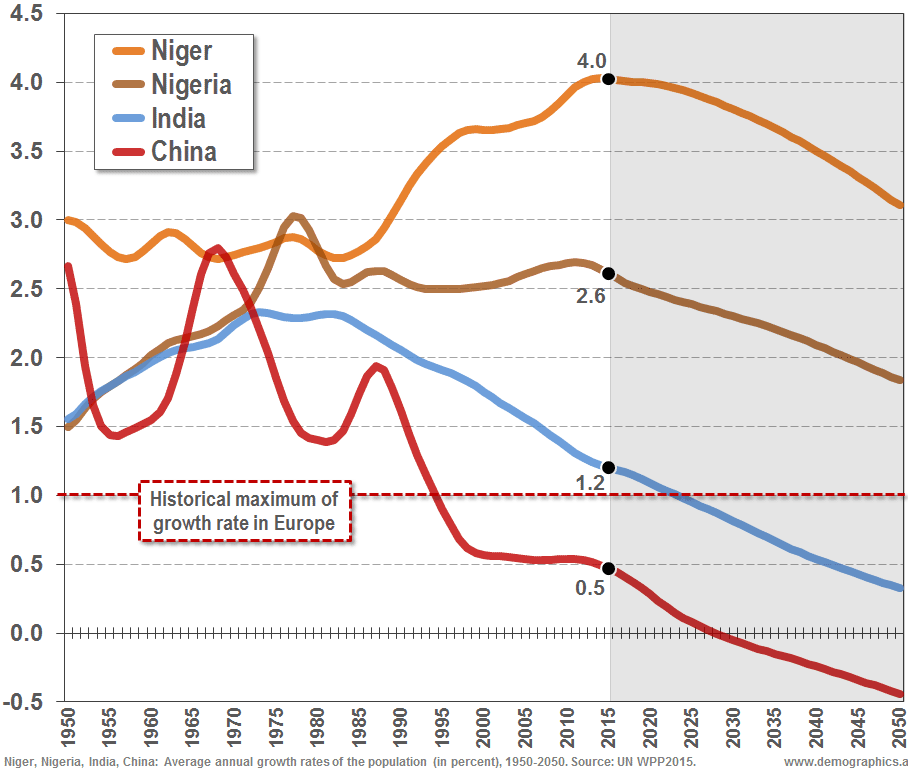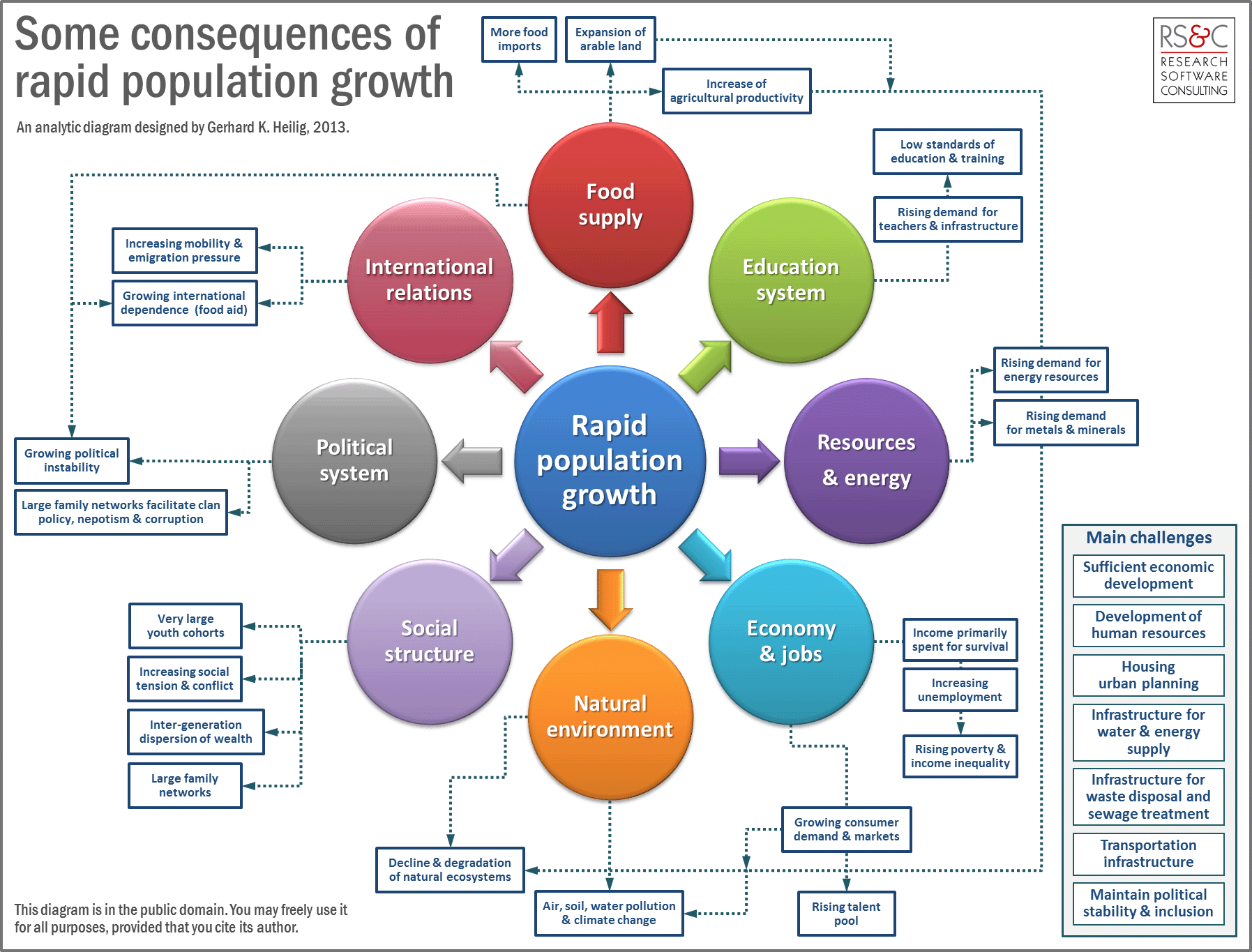
Only during the agricultural and industrial revolution in Europe and Northen America the world population increased significantly. Typical growth rates during that period were in the range of 0.5% to 1.0% - at the maximum.
However, since the 1950s we observe much higher rates of population growth in Asia, Africa and Latin America which sometimes exceed annual growth rates of 3% or even 4% (see: Figure 1). Such high rates of population growth have also occured in populations with several dozend or several hundred million individuals.
While population growth rates of below 1% may be quite benign, there are numerous economic, social and political problems related to much higher growth rates (see: diagram 1).
The education system may not be able to keep up with the rapidly increasing numbers of school-age children. Especially in poor countries with lacking administrative capacity it is rather difficult to organize the training of additional teachers, construction of schools, and preparation of school books and teaching materials under the condition of rapid population growth. Extremely high population growth has certainly contributed to the education disaster and insufficient vocational training in large parts of Africa.
Political stability may suffer in a country with high population growth - especially when the country is already densely populated. Social, ethnic, racial, religious or political tensions may flare up as the various groups compete over resources. The genozide in Rwanda and Burundi is certainly related to the fact that these countries had very high rates of population growth with farmers and cattle rangers competing for scarce lands.
International relations may be stressed due to excessive population growth - particularly when high rates of population growth occur in countries with scarce natural resources. People may be forced to emigrate into neighboring countries in search for work, water, ranging grounds or arable land. Boarder conflicts and international tensions may rise. While the current refugee crisis in Europe is primarily driven by violent conflicts in Syria, Afghanistan or Iraq, there are also young people from sub-Saharan Africa that try to escape from poverty and unemployment - conditions, that are at least partially caused by explosive population growth.
Environmental degradation is often a consequence of rapid population increase. In order to sustain a growing number of people the natural environment is increasingly being polluted, degraded or destroyed. Natural land cover is changed - often unreversible - due to agricultural expansion, hydropower dams, open pit mines, transportation infrastructure and expansion of settlements. Areas of rapid population growth (and high population density) are typically suffering extreme environmental problems - such as the horrendous air pollution in the urban agglomerations of China and India.
High vulnerability to natural disasters is associated with rapid population increase. People tightly packed into urban slums or unsanitary housing districts are particularly vulnerable to natural disasters and health problems. Flooding, land-slides, air-pollution or tropical hurricanes can cause millions of casualties in areas where population growth has created enormous (urban) concentrations of people - such as in Bangladesh, India, Eastern China and many other parts of Asia, Africa and Latin America.
Bongaarts, John. 2016. Development: Slow down population growth. Nature, 530, 409-412
Clark, Colin W. 1977. Population growth and land use. 2nd ed. (1st ed. 1967). London: Macmillan
Crutzen, Paul J. , Davis, Mike, Mastrandrea, Michael D., Schneider, Stephen H., Sloterdijk, Peter. 2011. Das Raumschiff Erde hat keinen Notausgang. Energie und Politik im Anthropozšn. Berlin: Suhrkamp. ISBN: 978-3-518-06176-3

